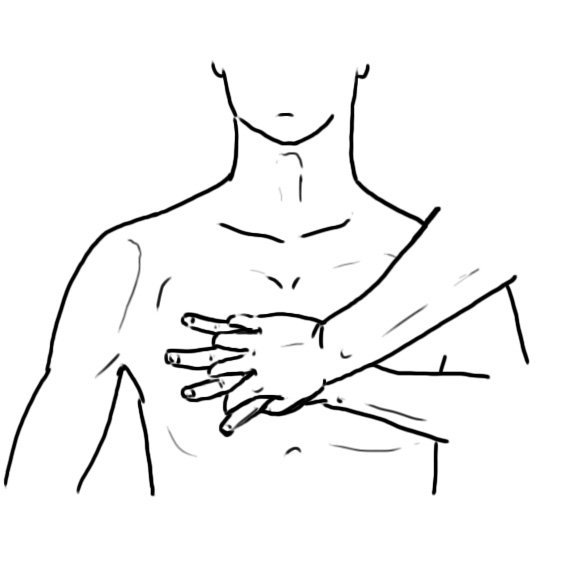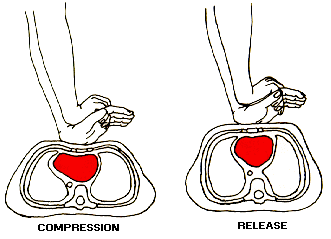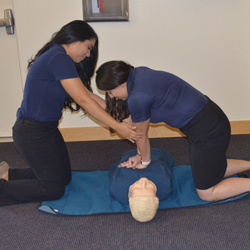This Is Why Your Chest Compressions Suck
Published (updated: ).
You don’t know where to put your hands

When a chest compression is performed, the weight of the chest compression is placed on the palm. The palm should be placed on the lower half of the patient’s sternum. The sternum or breastplate is the bone that connects the ribs on anterior portion of the patient’s chest.
You are not pushing deep enough

Adults and adolescents require a compression depth of 2 inches. Infants require 1/3 to 1/2 of their anterior posterior diameter (which usually works out to 1.5 inches).
Your are not allowing for full recoil of the chest
After the chest has been compressed, it needs to return to it’s neutral (without pressure) position. This is referred to as recoil. Without allowing for full recoil of the chest, blood flow to the heart will be decreased, and less blood coming in means less blood going out.
You are too slow
The goal is to get blood flowing in the patient’s body. It takes at least 100 chest compressions per minute to affect any blood flow.
The chest compressions are being performed at an angle

Chest compressions must be conveyed at a 90 degree angle from the sternum. The easiest way to accomplish straight up and down chest compressions are to touch the patient’s shoulder and abdomen with your knees when performing chest compressions.
You take too many breaks
It takes at least 1 minute to affect blood flow when performing chest compressions. Any delay greater than 15 seconds will result in the clock starting over. Delays in chest compressions should never exceed 4 seconds.
